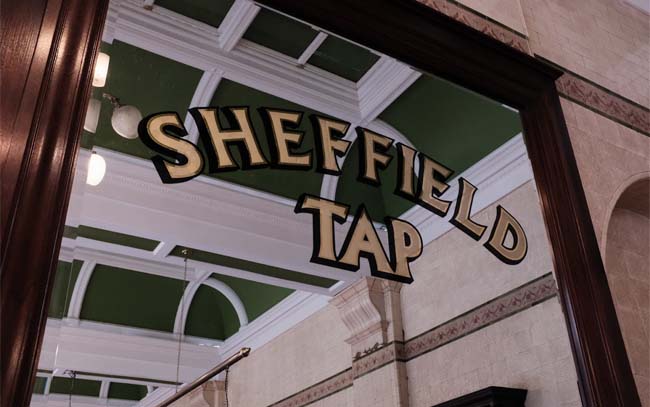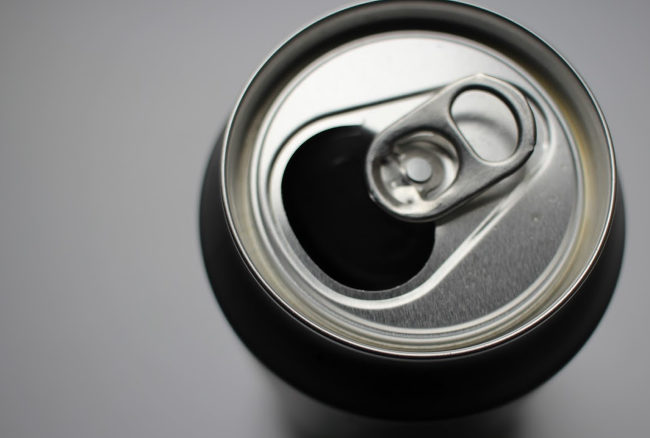Visit the Boak and Bailey's Beer Blog site
Every Saturday morning we round up the best writing about beer and pubs from the previous week. This time we’ve got lost novels, station bars and Irish pubs.
First, a bit of heartening news that speaks to the power of the pub in our communities. As reported by Ian Youngs for the BBC, when Manchester bartender Jack Chadwick discovered an old copy of working class writer Jack Hilton’s 1935 novel Caliban Shrieks, he wanted to see it back in print. But nobody knew who owned the rights. So Chadwick did the only sensible thing and put up posters in pubs in Oldham:
In one, before he had finished his pint, a woman approached him and gave him the names of the writer’s two best friends… The friends too had passed away, but Chadwick tracked down the widow of one and put a letter through her door… The woman, who had been unaware that she owned Hilton’s estate, donated the rights to Chadwick on the condition that he must do his utmost to breathe life back into his work.
 The editors at Pellicle continue to produce a balance of stories about the new and the old, trends and tradition. Their latest article, which was widely read and debated, is by (he loves it when we call him this) veteran beer writer Phil Mellows, on the subject of Bass:
The editors at Pellicle continue to produce a balance of stories about the new and the old, trends and tradition. Their latest article, which was widely read and debated, is by (he loves it when we call him this) veteran beer writer Phil Mellows, on the subject of Bass:
Draught Bass is now a regional brand. A distribution map would look a bit like a tadpole with an outsize bulging head in the east Midlands—principally Staffordshire, Derbyshire and Leicestershire—and a thin tail snaking down into the West Country. Plus a scattering of frog spawn around Wales… There is currently no Bass at all in the whole of East Anglia, and only one pub serving it in Sussex, Surrey and Kent—the Miners Arms in Sevenoaks… A beer once drunk in thousands of pubs across the land was displaying all the symptoms of an endangered species.
We were especially interested to read this because Bristol is one place where Bass is very much alive and well. Hardly a month goes by without us discovering some pub, new to us, where it’s on offer, has been on offer as long as anyone can remember, and is treated with something like reverence.
 At Brussels Beer City Eoghan Walsh has a new project: writing about pubs in Brussels where immigrant communities hang out and drink. Walsh is Irish so, naturally, the first piece is about Irish pubs:
At Brussels Beer City Eoghan Walsh has a new project: writing about pubs in Brussels where immigrant communities hang out and drink. Walsh is Irish so, naturally, the first piece is about Irish pubs:
Aodhán Connolly knows what makes for a good Irish pub. “I would call myself a bit of a wee connoisseur,” he says. “And for me, there’s three things.” Connolly is the director of the Office of the Northern Ireland Executive in Brussels, a post he’s held since 2022, though work has brought him to Brussels for almost 20 years. “One is a good pint, right?” That’s why he suggested meeting at The Wild Geese, a corner pub in Brussels’ European quarter. “It’s not your usual sort of Irish bar,” Connolly says, “but by God, do they do a good pint, [and] it’s so hard on continental Europe to get a good pint of Guinness.”
 For VinePair Evan Rail, an American in Prague, writes about ‘The timeless appeal of drinking in train station bars’. The article ranges far and wide, from Sheffield to Leipzig, and identifies a broad trend:
For VinePair Evan Rail, an American in Prague, writes about ‘The timeless appeal of drinking in train station bars’. The article ranges far and wide, from Sheffield to Leipzig, and identifies a broad trend:
For decades, bars at train stations have had a bad reputation, often seen as unsafe, even dangerous, and widely considered the last place anyone would expect to get a great drink. But in recent years, train station bars and pubs have undergone a real renaissance. Some of the grittiest have been embraced for their status as authentic dives. Others have been completely renovated and modernized, emerging as night-out destinations in their own right, allowing customers to have a top-shelf drink or two before, during, or after a journey.
 Winnowing fonio seeds. SOURCE: Wikimedia Commons under CC BY-SA 4.0.A few months ago, we did a little ‘futures thinking’ in our monthly newsletter, looking for signals of where beer might be going in decades to come. One strand that interested us especially was around sustainability and the environment – what does beer look like in an era of climate change, high energy costs, and water shortages? Now, via The Guardian, we have another signal to consider:
Winnowing fonio seeds. SOURCE: Wikimedia Commons under CC BY-SA 4.0.A few months ago, we did a little ‘futures thinking’ in our monthly newsletter, looking for signals of where beer might be going in decades to come. One strand that interested us especially was around sustainability and the environment – what does beer look like in an era of climate change, high energy costs, and water shortages? Now, via The Guardian, we have another signal to consider:
There’s a certain magic to fonio, a tiny golden grain believed to be Africa’s oldest cultivated cereal. The ancient grain’s potential to solve pressing modern environmental and economic challenges inspired Pierre Thiam, the Senegalese-born chef, to become fonio’s No 1 champion… After rediscovering the grain and showing home cooks how easy to cook and versatile it is, now Thiam is introducing brewmasters around the world to what fonio can do in beer… It all started when Thiam ran into Garrett Oliver, the brewmaster of Brooklyn Brewery, at a 2018 party hosted by Ahmir “Questlove” Thompson. They decided to make a test batch of fonio beer.
(With thanks to Oliver Holtaway for the heads-up.)
 Bryan ‘The Beer Viking’ Betts has written about the unsexy key to the rise of craft beer in cans: improvements in production line and packaging technology. It draws up on his experience writing for the engineering trade press:
Bryan ‘The Beer Viking’ Betts has written about the unsexy key to the rise of craft beer in cans: improvements in production line and packaging technology. It draws up on his experience writing for the engineering trade press:
[It] was really only big-brand beers – and very often, cheap brands at that – that were sold in cans back in 2013, and the biggest reason was labelling… [By 2015] things were changing. You had multiple suppliers offering much smaller canning machines, both manual and semi-automatic, which is where the engineering interest came in. You could even get hand-operated can seamers to seal a lid on – these were picked up by some brew clubs and self-brew shops, and are the ancestors of the crowler machines you see in some bars today… But the problem was still labelling. Sticky labels were an obvious option, but they needed a dry surface… As time went by, potential solutions appeared. Cans could be dried more easily, sticky labels were more tolerant, labelling machinery got better, so even quite short runs could be canned and labelled. Label quality advanced hugely too, so you could have embossed or textured labels, or labels with cut-outs.
We used to put a Tweet here at the end – something that especially amused or intrigued us. We’ve stopped doing that because it doesn’t seem fair to prioritise Twitter when there are so many other social media platforms emerging.
We don’t know what’s going on with social media now. In a post this week Jeff Alworth tried to predict where things might be going. He suggested that we might be seeing a return to individuals making some effort to manage their own content feeds, rather than assuming it will be pumped their way through one or two channels where most people are obliged to hang out.
With that in mind, we’d urge you to think about which voices or sources you’d miss if they stopped Tweeting (it’s on the cards for us, at some point) and:
- sign up for their newsletters
- add them to an RSS feed
- follow them on other platforms where you’re active
It’s not the end of the world – none of this matters all that much – but it is worth thinking about.
For more good reading check out Stan Hieronymus’s round-up from Monday and Alan McLeod’s from Thursday.
News, nuggets and longreads 8 July 2023: can the can originally posted at Boak & Bailey's Beer Blog
More...
The editors at Pellicle continue to produce a balance of stories about the new and the old, trends and tradition. Their latest article, which was widely read and debated, is by (he loves it when we call him this) veteran beer writer Phil Mellows, on the subject of Bass:
At Brussels Beer City Eoghan Walsh has a new project: writing about pubs in Brussels where immigrant communities hang out and drink. Walsh is Irish so, naturally, the first piece is about Irish pubs:
For VinePair Evan Rail, an American in Prague, writes about ‘The timeless appeal of drinking in train station bars’. The article ranges far and wide, from Sheffield to Leipzig, and identifies a broad trend:
Winnowing fonio seeds. SOURCE: Wikimedia Commons under CC BY-SA 4.0.A few months ago, we did a little ‘futures thinking’ in our monthly newsletter, looking for signals of where beer might be going in decades to come. One strand that interested us especially was around sustainability and the environment – what does beer look like in an era of climate change, high energy costs, and water shortages? Now, via The Guardian, we have another signal to consider:
Bryan ‘The Beer Viking’ Betts has written about the unsexy key to the rise of craft beer in cans: improvements in production line and packaging technology. It draws up on his experience writing for the engineering trade press:




 Reply With Quote
Reply With Quote